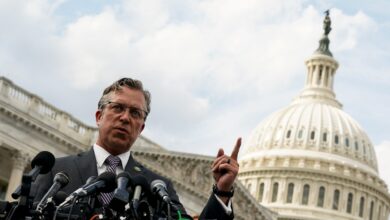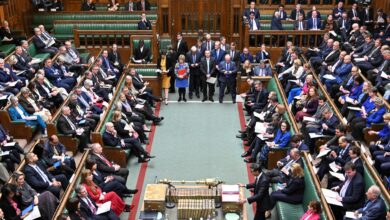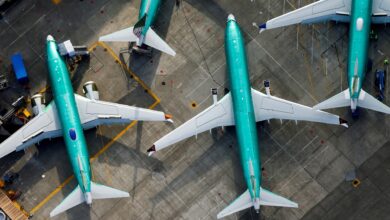Seeking medical care, one family races anticipated US border restrictions
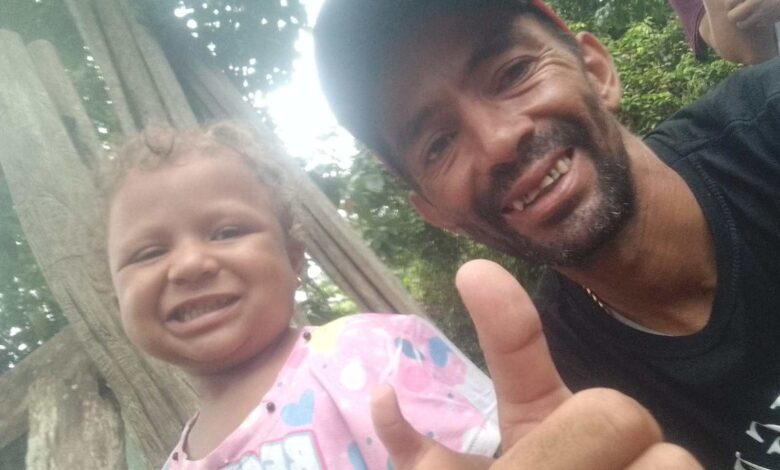
Medellin, Colombia – Victor Hidalgo Lopez had already carried his three-year-old daughter through 10 countries by the time they reached Mexico.
Along the way, they used long hours on the road to prepare for their destination, the United States.
Hidalgo, a 37-year-old from Venezuela, quizzed Emiliannys on how to count to 10 in English and how explorer Christopher Columbus reached the Americas.
“On a boat!” she chirped in response.
With golden brown hair and a broad smile, Emiliannys barely reached her dad’s knee. She was born with a rare genetic disorder: congenital adrenal hyperplasia (CAH), a condition which affects the hormones for genital development, salt regulation and stress.
Like millions of other migrants last year, Hidalgo had decided travelling to the US was his and Emiliannys’s last chance for a better life.
Maybe there, he figured, Emiliannys could finally receive the treatment she needed.

He knew of people successfully entering the country by claiming humanitarian protection, or asylum, at the border. His plan was to ask for asylum based on Emiliannys’s urgent need for medical care.
“My American dream is to see my daughter operated on,” Hidalgo told Al Jazeera last month from Mexico.
Their final push to arrive at the border came in late December, against the backdrop of ongoing negotiations in Washington, DC.
There, US politicians were weighing whether to further tighten the country’s immigration procedures, in an effort to crack down on unprecedented numbers of arrivals at the border.
The negotiations in Washington hit a milestone last week, as US President Joe Biden held a bipartisan meeting with legislators at the White House to help hammer out a deal.
Biden, a Democrat, has made funding for Ukraine’s defence against Russia a priority for his administration, but Republicans have refused to consider further aid to the country without passing a new immigration policy.
The details of a possible deal remain under wraps. But media reports have said proposals include stringent limits to the US asylum process.
Asylum lets foreign nationals who fear persecution for their “race, religion, nationality, membership in a particular social group, or political opinion” seek protection within US borders.
Among the possible changes lawmakers are discussing could be stricter standards for screening “credible fear” interviews, wherein asylum seekers make the case they face persecution abroad.
Another proposal reported in the media would allow border agents to forgo asylum screenings altogether when their offices are overwhelmed with applicants. There have also been talks of expediting the deportation process.
But immigration advocates say asylum is critical for people who have no other option to seek safety.
“People are just fleeing dangerous conditions immediately and don’t have time to wait,” said Melina Roche, campaign manager for the humanitarian advocacy group Welcome with Dignity. “[Asylum] is a life-saving pathway.”
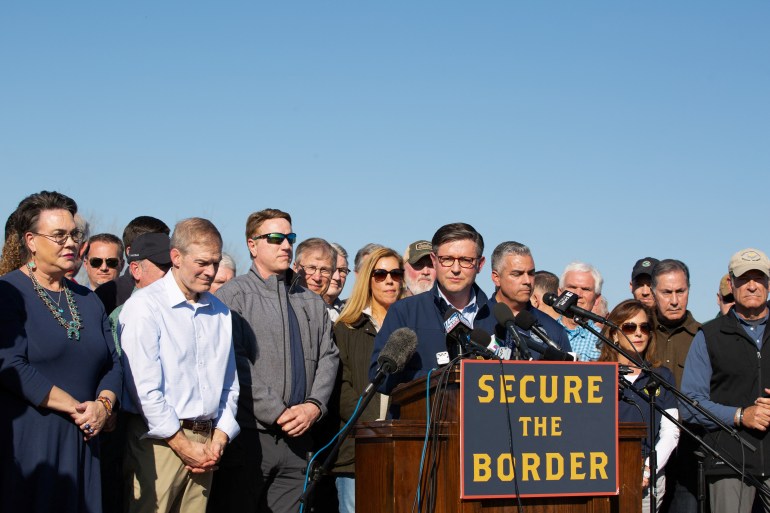
The pressure to tighten immigration policy has been amplified in recent months by a spike in arrivals at the US-Mexico border.
In fiscal year 2023, US Customs and Border Protection (CBP) recorded 2,475,000 “encounters” with undocumented immigrants along the border — its highest tally ever.
While official statistics have yet to be released for December, CBS News reports that agents intercepted a record monthly total of 300,000 migrants and asylum seekers entering between ports of entry.
CBP also said in a press release last month that it has “surged personnel and transportation resources” to the border to keep up with demand.
But politicians on both sides of the aisle, including Democrats like New York Mayor Eric Adams, have criticised Biden for not doing more to slow the number of arrivals.
Experts say it is hard to tell whether expelling migrants more often or more quickly would have a lasting impact on those statistics.
While border crossings can dip after the introduction of new US policies, they sometimes increase again as migrants adjust to the new requirements.
That was the case last year when the Biden administration touted a decline in crossings after the expiration of the Title 42 border policy and the implementation of new restrictions. Within months, however, the number of arrivals had climbed once more.
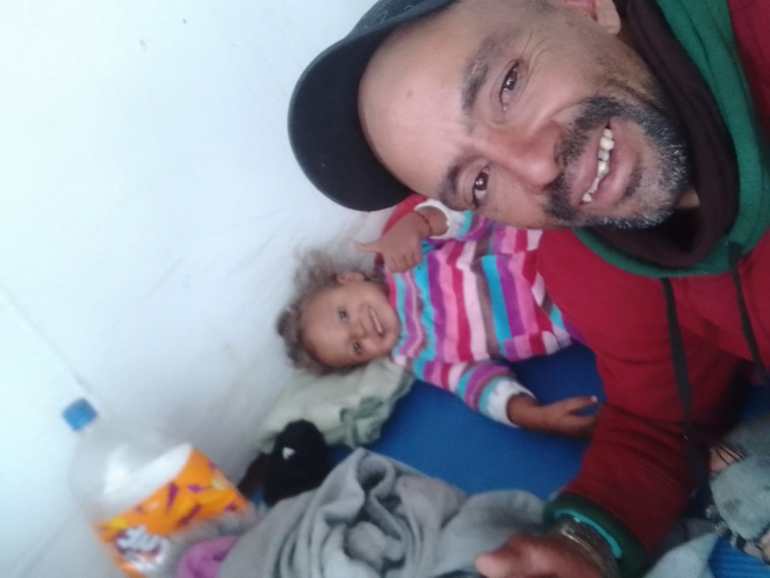
Then there are the ongoing pressures migrants and asylum seekers face in their home countries that force them to pursue lives abroad.
In Hidalgo’s home country of Venezuela, the government of President Nicolas Maduro has faced criticism for human rights abuses meant to squelch dissent. The country’s economic collapse has also left basic necessities like food and medicine scarce.
After working without pay for several months, Hidalgo fled across the border to settle in neighbouring Colombia.
That’s where Emiliannys was born in 2020. He tried to get her care in Bogota, but he said her doctors were not experts on the disorder, and it was difficult to pay for pills and treatment without legal residence in Colombia.
“What affected us the most was our migratory status,” he said.
He then took Emiliannys to Ecuador, and later to Peru and Chile, hoping to find the appropriate treatment for her rare condition.
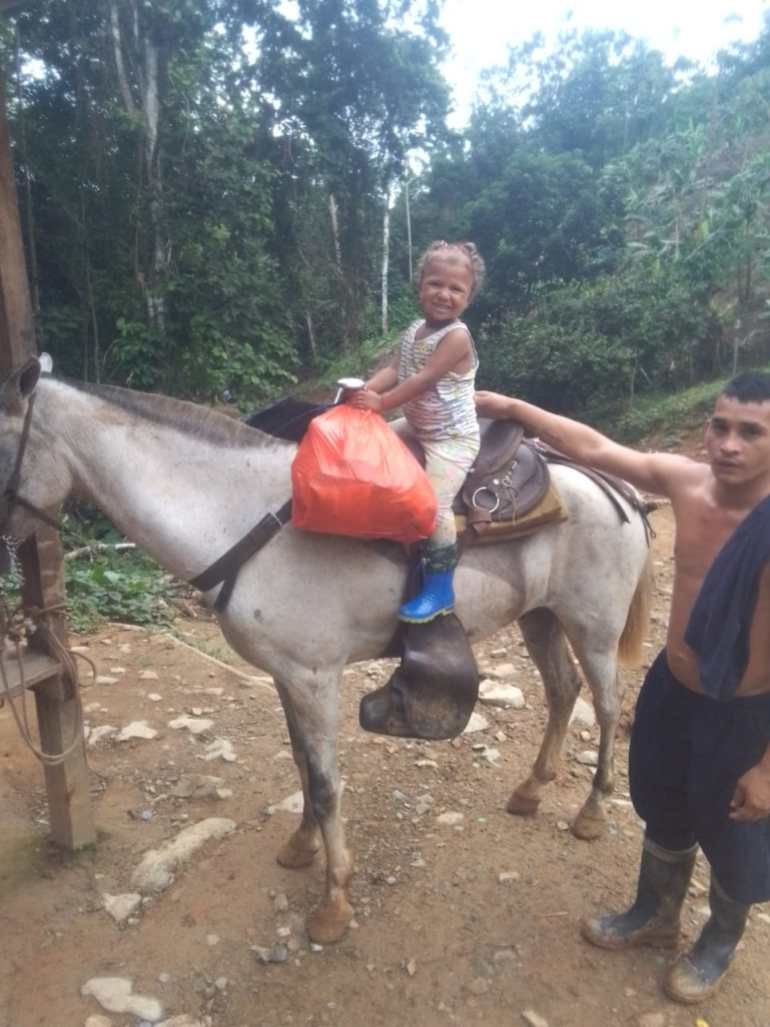
But in each country, it was much the same: Without residency, Hidalgo didn’t see a way for Emiliannys to get the care she needed.
They even tried going back to Venezuela, but the two prescriptions Emiliannys needed would cost nearly $200 a month, an impossible amount. Hidalgo struggled to find work, which he said would only earn him around $6 per month.
So he turned his hopes to the US. As he and Emiliannys journeyed north from South America, Hidalgo documented the trip.
In photographs, Emiliannys would flash a peace sign, as they walked through the Darien Gap, a treacherous jungle connecting Colombia to Panama.
“¡Vamos, Papi, tú puedes!” Hidalgo remembers her telling him. “Let’s go, Dad, you can do it!”
“All my inspiration … in the jungle, it was through her,” Victor said, recounting how he carried her in his arms for hundreds of miles. “She was a warrior.”
On the final day of 2023, they were about to board a final train to reach the US-Mexico border when Emiliannys started to tremble in Hidalgo’s arms.
Soon she was vomiting and convulsing. Hidalgo flagged down a nearby truck and begged the driver to take them to the hospital.
The driver took them as far as the local pharmacy. Emiliannys died within minutes.
Doctors later told Hidalgo that she had experienced complications of the stomach flu – her second bout that year.
Hidalgo said the death of his little girl felt “unexplainable”, like a “very strong pain” rippling through his body.
“The first thing I wanted was to throw myself at the first vehicle that passed in front of me,” he said, struggling to describe the moments after his daughter’s death.
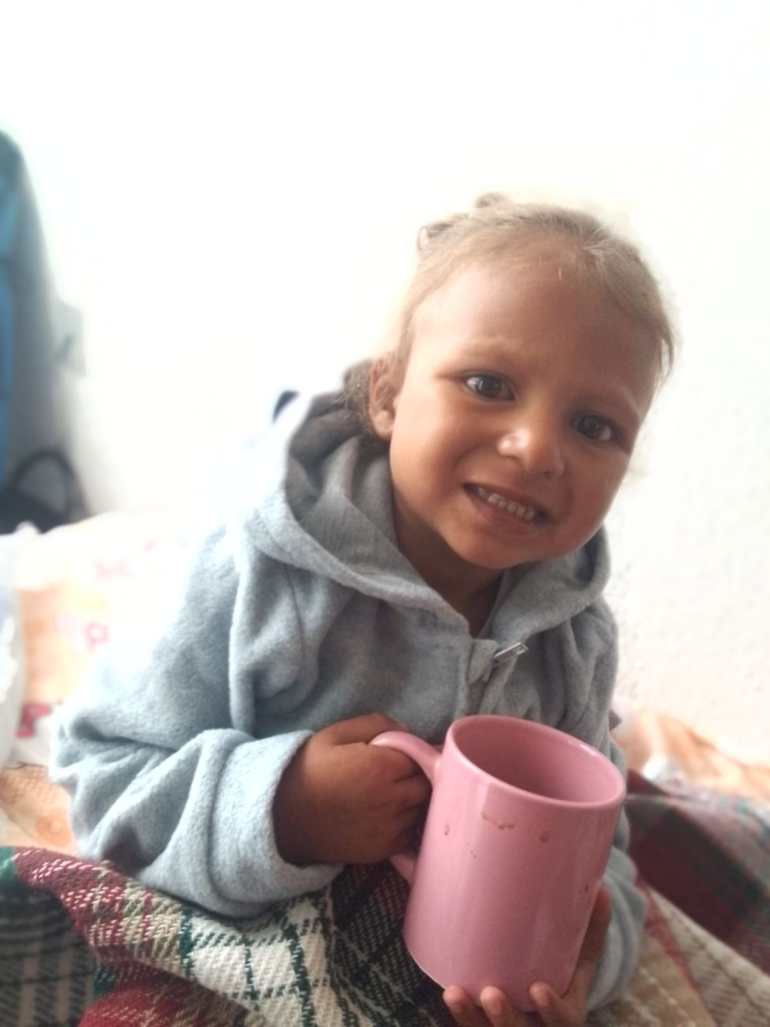
While Hidalgo’s family might have qualified for protection at the border, not everyone does, said Theresa Cardinal Brown, the director of immigration policy at the Bipartisan Policy Center.
“They don’t know our laws well enough to know whether or not they can get asylum, but they know that’s a way they can come,” she explained.
Cardinal Brown also said it was possible that Hidalgo and his daughter could have been offered emergency entry for “critical medical treatment” if they had applied from outside the US.
But she noted that many migrants are unaware of those legal pathways, instead opting for the long, risky trip to claim asylum at the border.
“Or they don’t believe in those other ways, or those other ways take too long,” she said. She called on the US to educate people “much sooner in their own decision-making” and take greater measures to counter smugglers who encourage migration.

A January report from the nonpartisan Migration Policy Institute also declared that a “new era of large-scale migration has begun at the US-Mexico border” — and that one solution would be to simplify the resettlement process.
Among its recommendations was to “streamline lawful pathways and build new ones to and beyond the United States”.
Now that Emiliannys is gone, Hidalgo will stay in Mexico for now. A family in Chihuahua took him in after her death.
His mission to find medical care for Emiliannys, after all, is over — after hundreds of miles and dozens of months.
The family helped him hold a small memorial at a local chapel, her cremated remains collected in a small marble urn.
“Forever you will live in our hearts,” the urn’s plaque reads.
But in the days since losing Emiliannys, Hidalgo said he has wanted to help other migrants and asylum seekers continue on their journey, so they don’t feel as helpless as he did.
After gathering donations, Victor had enough money to buy ingredients for ham-and-cheese sandwiches. He made 150, handing them out to people passing through on their own trek north.
